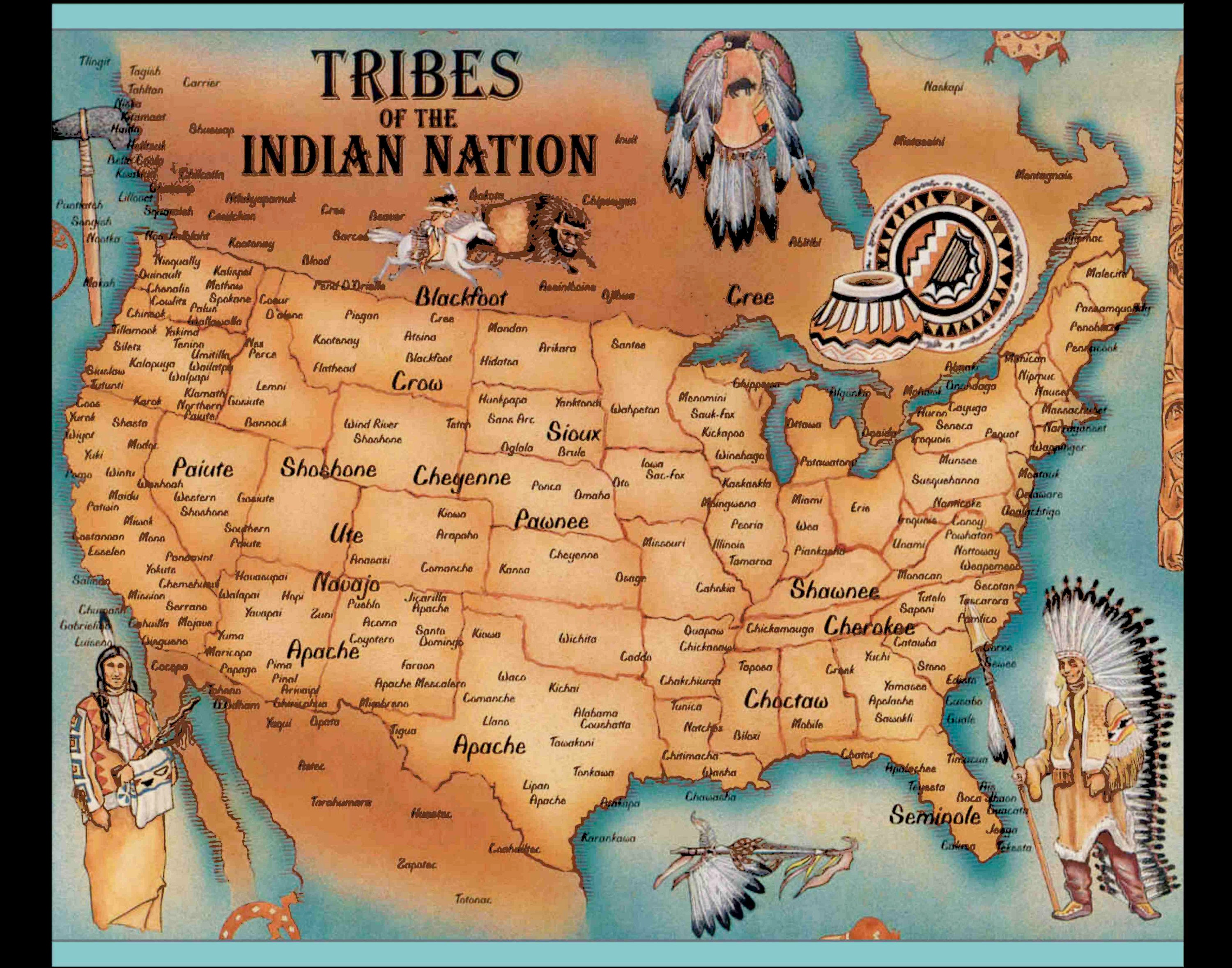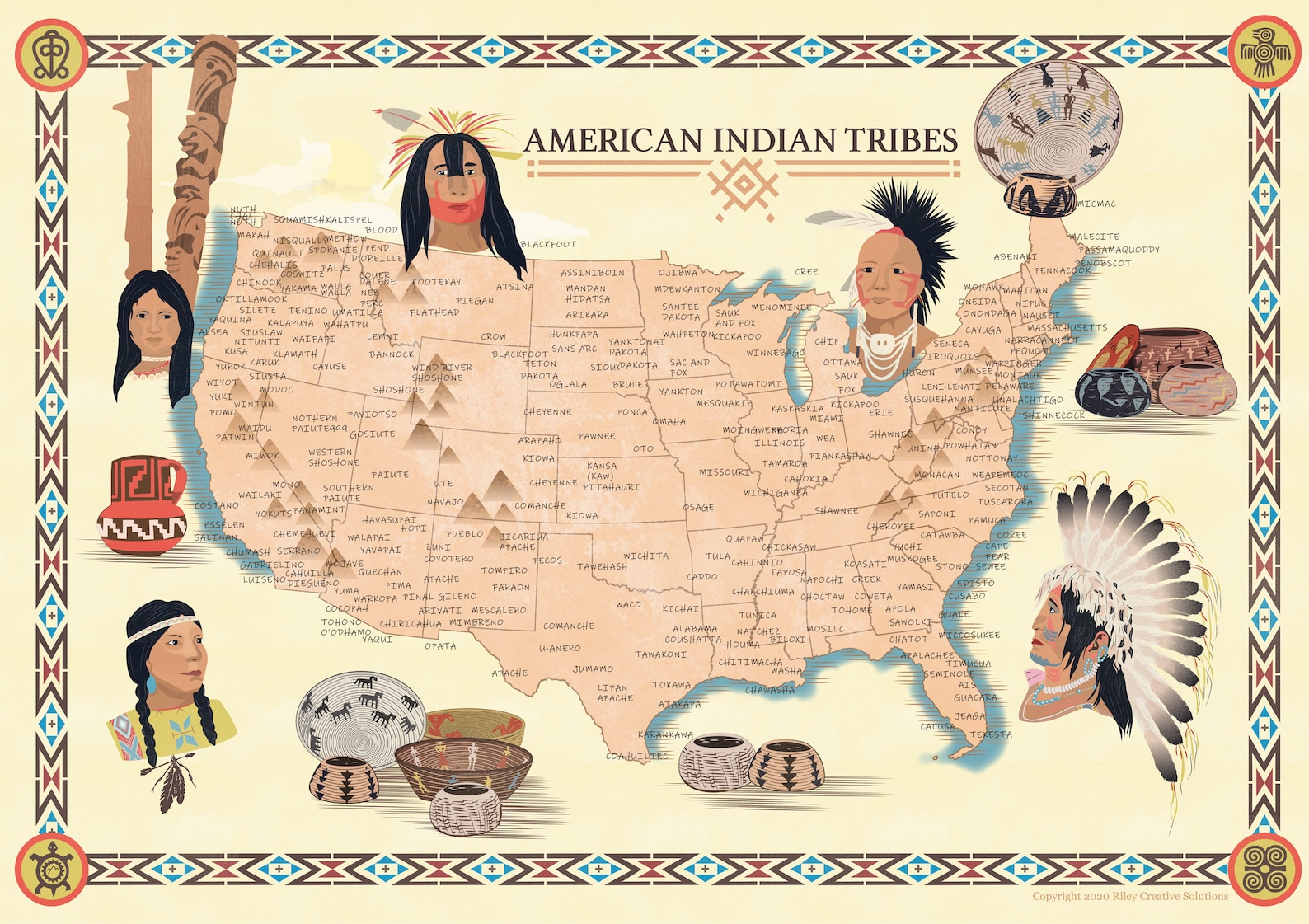
Charting Resilience: A Map of Native American Historical Figures
Imagine a map that transcends mere geography, transforming into a vibrant, interactive tapestry of history, identity, and enduring spirit. This is the essence of a "Map of Native American Historical Figures"—not just a collection of names and dates, but a dynamic portal into the profound and complex narratives of the continent’s First Peoples. Far from a static artifact, such a map serves as an indispensable tool for historical education and a compelling guide for the conscious traveler, challenging monolithic stereotypes and revealing the rich, diverse heritage of hundreds of distinct nations.
This isn’t merely a geographical representation; it’s an intellectual and emotional journey. Each pin, each highlighted territory, each clickable profile on this map represents a life lived with purpose, a struggle for sovereignty, an act of profound cultural preservation, or a moment of pivotal leadership. It is a counter-narrative to the often-oversimplified or outright erased history of Native Americans, presenting a panorama of figures who shaped their worlds, resisted oppression, adapted to immense change, and continue to inspire.
The Map as a Narrative Canvas: Beyond Simplistic Borders

The true power of this map lies in its ability to contextualize history geographically. It illustrates that Native American identity is inextricably linked to the land—ancestral territories, sacred sites, treaty boundaries (both honored and broken), and the often-painful routes of forced removal. By placing historical figures within their original homelands or areas of influence, the map immediately conveys the deep connection between people, place, and culture.
For instance, hovering over the Great Plains might reveal Sitting Bull, the revered Lakota leader, his presence tied to the Powder River Country where he led his people in defense of their lands and way of life against U.S. expansion. Moving eastward, a pin in the Ohio Valley could illuminate Tecumseh, the Shawnee chief who envisioned a pan-Indian confederacy to resist settler encroachment, his efforts echoing across multiple tribal territories. The Pacific Northwest might highlight Chief Seattle (Si’ahl), a Suquamish and Duwamish leader, whose powerful words on land stewardship and the interconnectedness of all life resonate globally even today.
The map also delineates the incredible linguistic and cultural diversity across the continent. Instead of a generic "Native American" category, it might categorize figures by their specific tribal affiliation—Cherokee, Navajo, Iroquois, Apache, Sioux, Haudenosaunee, Pueblo, Anishinaabe, and countless others—each with unique histories, governance structures, spiritual beliefs, and artistic expressions. This granular detail is crucial for dismantling the pervasive myth of a singular "Indian" identity.
A Tapestry of Leaders: From Ancient Wisdom to Modern Activism

The figures populating this map are not confined to a single era or role. They represent a continuum of leadership, innovation, and resilience spanning millennia:
-
Ancient Civilizations and Early Leaders: The map would reach back beyond European contact, showcasing leaders of monumental societies like the Mound Builders of Cahokia, whose vast urban centers flourished centuries ago in present-day Illinois, or the Ancestral Puebloans, whose sophisticated cliff dwellings and astronomical observatories in the Southwest speak to advanced architectural and scientific knowledge. While individual names from these periods are often lost to time, the map can highlight the presence of complex societies and the leadership structures that guided them.

-
Contact and Colonial Era: Figures like Squanto (Tisquantum) of the Patuxet, whose knowledge was vital to the Plymouth colonists’ survival, or Pocahontas (Matoaka) of the Powhatan, whose story, though often romanticized, reflects complex diplomacy and cultural exchange. These figures often navigated the perilous early interactions between Indigenous nations and European powers, making choices that had profound consequences for their people.
-
Resistance and Nation Building: This category would be rich with figures who fiercely defended their sovereignty and lands. Geronimo (Goyaałé), the Apache warrior and spiritual leader, represents the tenacious resistance against Mexican and U.S. forces. Chief Joseph (Hinmatóowyalahtq̓it) of the Nez Perce, known for his eloquent speeches and strategic retreat, symbolizes the tragic but dignified struggle to preserve a way of life. Pontiac, the Odawa war chief, orchestrated a widespread resistance movement against British expansion in the Great Lakes region. These leaders embody courage, strategic brilliance, and an unwavering commitment to their people’s future.

-
Intellectuals, Innovators, and Cultural Guardians: Not all leaders wielded weapons. Sequoyah, the Cherokee polymath, single-handedly developed a syllabary for the Cherokee language, achieving widespread literacy within his nation in an astonishingly short time—a feat comparable to the invention of the printing press. Ely S. Parker (Donehogawa), a Seneca sachem and U.S. Civil War general, served as President Grant’s military secretary and later as the first Native American Commissioner of Indian Affairs, bridging worlds and advocating for his people. These figures championed cultural preservation, intellectual advancement, and adaptation.
-
Women Leaders and Advocates: The map would prominently feature women, often overlooked in mainstream historical narratives, who played pivotal roles. Sarah Winnemucca (Thocmetony) of the Paiute, an eloquent author, educator, and activist, tirelessly advocated for her people’s rights and exposed government corruption. Wilma Mankiller, the first female Principal Chief of the Cherokee Nation, spearheaded significant advancements in community development, health, and education, embodying modern tribal self-governance. These women demonstrate the matriarchal traditions and powerful leadership roles women held and continue to hold in many Native societies.
-
Modern Activists and Visionaries: The story doesn’t end in the 19th century. Figures like Russell Means, a prominent Oglala Lakota activist and leader in the American Indian Movement (AIM), fought for treaty rights and self-determination in the latter half of the 20th century. Ada Deer, a Menominee activist, was instrumental in restoring federal recognition to her tribe, reversing a disastrous "termination" policy. These contemporary figures remind us that Native American history is not a closed chapter but an ongoing, evolving narrative of resilience, political action, and cultural revitalization.
History and Identity: The Intertwined Threads
The "Map of Native American Historical Figures" is a profound exploration of both history and identity because these two elements are inseparable for Indigenous peoples.
History: The map corrects the historical record. It dismantles the myth of a "vanishing race" by demonstrating continuity from pre-contact civilizations to vibrant contemporary nations. It exposes the brutal realities of colonialism, forced removals (like the Trail of Tears, which can be visualized as a route on the map), broken treaties, and genocidal policies, but crucially, it does so through the lens of Indigenous agency and resistance, not just victimhood. It highlights the complex diplomatic relationships between Native nations and European powers, and later, the U.S. government, revealing a history of independent nations asserting their sovereignty.
Identity: The map is a powerful affirmation of Indigenous identity, both individual and collective.
- Sovereignty: By marking ancestral lands and showcasing leaders who fought for their nation’s independence, the map underscores the inherent sovereignty of Native American tribes—a status recognized by treaties and international law, yet constantly challenged. It educates viewers about tribal governments, courts, and distinct nationhood.
- Cultural Resilience: The presence of figures like Sequoyah or leaders who preserved ceremonies and languages against immense pressure speaks to an extraordinary cultural resilience. The map can illustrate how traditions were maintained, adapted, and revitalized, preventing cultural erasure.
- Connection to Land: For many Native Americans, identity is profoundly rooted in their ancestral lands. The map vividly demonstrates this connection, showing how sacred sites, natural resources, and geographical features are integral to spiritual beliefs, cultural practices, and historical memory.
- Challenging Stereotypes: By presenting a diverse array of leaders—warriors, diplomats, artists, scientists, spiritual figures, women, men, ancient, modern—the map actively combats the pervasive, harmful stereotypes of the "noble savage" or the "bloodthirsty Indian." It presents Native Americans as complex, multifaceted human beings with agency, intellect, and profound contributions to human history.
- A Living Legacy: Crucially, the map doesn’t relegate Native Americans solely to the past. By including contemporary figures, it emphasizes that Indigenous identity is dynamic and living, constantly evolving while maintaining deep roots. It showcases the ongoing struggles for justice, environmental protection, and self-determination that continue today.
For the Travel Blog and Historical Education: A Call to Engage
For a travel blog, this map offers an unparalleled opportunity to transform tourism from a superficial glance into a deeply meaningful experience. Instead of merely visiting a national park, travelers can understand its Indigenous origins and the figures who lived, fought, and thrived there.
- Responsible Tourism: The map encourages responsible and respectful engagement. It guides travelers to understand the cultural significance of places, fostering a deeper appreciation and discouraging disrespectful appropriation.
- Deeper Exploration: Imagine planning a trip to the Southwest and using the map to discover the history of the Navajo Code Talkers during WWII, or the Pueblo Revolt leaders who successfully expelled Spanish colonizers for a time. This layer of historical context enriches every destination.
- Connecting with Living Cultures: The map can direct travelers to tribal cultural centers, museums, and events, allowing them to engage with living Indigenous communities and contemporary artists, fostering direct and respectful interaction.
- Beyond the Brochure: It moves beyond typical tourist narratives, offering authentic perspectives and challenging visitors to see the landscape and its history through Indigenous eyes.
For historical education, the map is an invaluable pedagogical tool.
- Visual Learning: It provides a compelling visual aid that transcends static textbook pages, making history come alive and feel tangible.
- Interdisciplinary Connections: It naturally connects history with geography, anthropology, political science, and environmental studies.
- Critical Thinking: It encourages students to critically analyze historical narratives, question dominant perspectives, and appreciate the complexities of power dynamics and cultural exchange.
- Engagement and Empathy: By focusing on individual stories and their geographical context, it fosters empathy and a deeper understanding of the human experience.
Conclusion: A Map for the Future
The "Map of Native American Historical Figures" is far more than a cartographic exercise; it is a vital act of reclamation, remembrance, and recognition. It serves as a powerful testament to the resilience, ingenuity, and enduring spirit of Indigenous peoples across North America. By charting the lives of these remarkable individuals and grounding them in their ancestral lands, the map not only illuminates a rich, often-overlooked history but also reinforces the vibrant, living identity of Native nations today. It is an invitation—for travelers, students, and indeed, all people—to embark on a journey of discovery, to confront historical truths, and to foster a profound respect for the First Peoples whose stories are woven into the very fabric of this continent. It is a map not just of the past, but a crucial guide for understanding the present and shaping a more equitable future.
